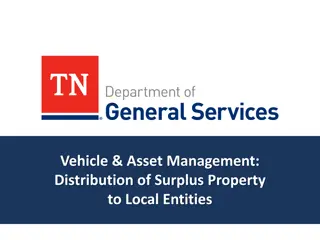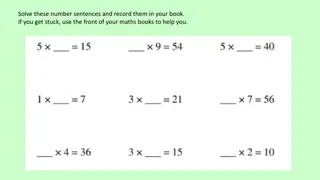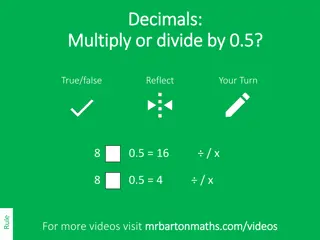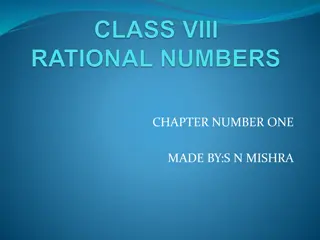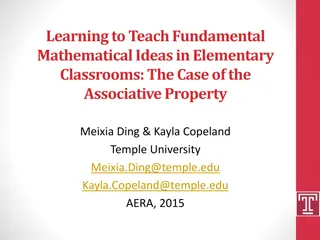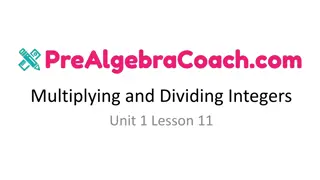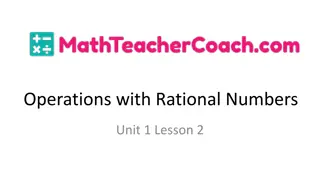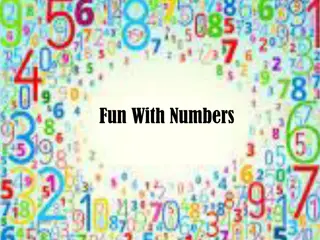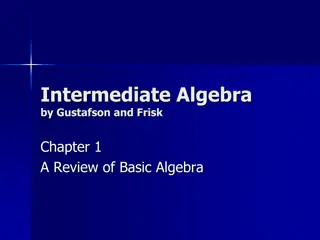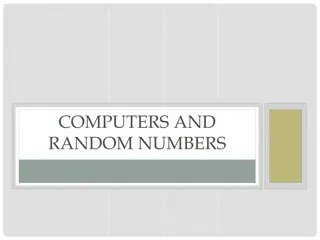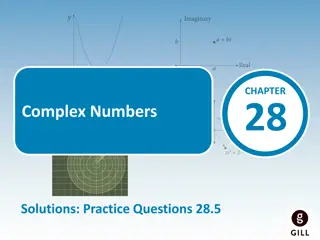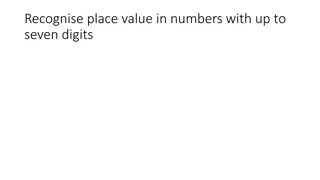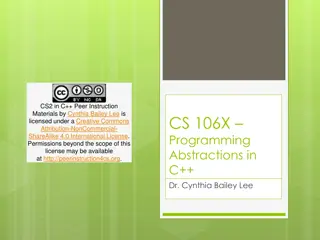Multiplying by 3 Numbers Lesson: Associative Property and Problem-Solving
Explore the concept of multiplying three numbers and utilizing the Associative Property of Multiplication. Understand how changing the grouping of factors doesn't affect the product. Engage in problem-solving scenarios involving multiple multiplication operations. Enhance your skills through real-world examples and visualizations.
Download Presentation

Please find below an Image/Link to download the presentation.
The content on the website is provided AS IS for your information and personal use only. It may not be sold, licensed, or shared on other websites without obtaining consent from the author.If you encounter any issues during the download, it is possible that the publisher has removed the file from their server.
You are allowed to download the files provided on this website for personal or commercial use, subject to the condition that they are used lawfully. All files are the property of their respective owners.
The content on the website is provided AS IS for your information and personal use only. It may not be sold, licensed, or shared on other websites without obtaining consent from the author.
E N D
Presentation Transcript
MULTIPLYING BY 3 NUMBERS LESSON 6-6 COMMON CORE STANDARDS 3.OA.3 3.OA.5 3.OA.8
OBJECTIVE I can multiply three numbers and use the Associative Property of Multiplication.
VOCABULARY ASSOCIATIVE PROPERTY OF MULTIPLICATION The Associative Property of Multiplication says that you can change the grouping of the factors or the order you multiply them and still get the same product. Examples: 3 X 4 X 2 = 2 X 4 X 3 (3 x 4) x 2 = 3 x (4 x 2)
SET THE PURPOSE You have learned that you can add numbers in any order or grouping and the sum remains the same. Today, I am going to show that you can also multiply numbers in any order or grouping and the product stays the same.
CONNECT When might you need to multiply three numbers? Fruit drinks in 3 boxes with 2 rows that have 6 drinks in each row. The total number of students in 2 buses with 8 rows and 4 seats in each row.
POSE THE PROBLEM Gina has 2 quilt sections. Each section has 5 rows with 3 squares in each row. How many squares are in both sections? How would you solve this? Would Drawing a picture help? Record what you did on your recording sheet. Include number sentences in your work.
SOLVING THE PROBLEM 2 x 5 x 3 How many quilt sections are there? 2 sections How many rows are in each quilt section? 5 rows So how many rows are there in all? 10 rows in all with 3 squares in each row How many squares are there in all? 30 squares
ANOTHER WAY How many rows are in each quilt section? 5 rows How many squares are in each row? 3 squares So, how many squares are in one quilt section? 15 squares There are 2 sections with 15 squares in each section. How many squares are there in all? 30 squares
SOLVING THE PROBLEM 2 x (5 x 3) = 2 x 15 = 30 (2 x 5) x 3 = 10 x 3 = 30 Do different ways that you group the factors change the product when you multiply? No! Both products are the same?
USE TWO DIFFERENT GROUPINGS TO SOLVE EACH PROBLEM 2 x 4 x 2 (2 x 4) x 2 8 x 2 = 16 OR OR 2 x (4 x 2) 2 x 8 = 16 3 x 4 x 1 (3 x 4) x 1 OR 3 x (4 x 1) 12 x 1 = 12 OR 3 x 4 = 12
WRITE THE MISSING NUMBER 3 x (2 x 5) = 30, so (3 x 2) x 5 = ______ 3 x 10 = 30 so, 6 x 5 = 30 4 x (2 x 4) = 32, so (4 x 2) x 4 = ______ 4 x 8 = 32 so, 8 x 4 = 30
TRY IT Sara has 4 quilt pieces. Each piece has 3 rows with 3 squares in each row. How may squares are in Sara s quilt pieces? Draw a picture to help you.
WRITING TO EXPLAIN David says that the Associative (Grouping) Property of Multiplication is just like the Associative (Grouping) Property of Addition. Explain David s thinking. Give examples to show how these two properties work in similar ways.
1 POINT -WEAK The Grouping Property lets you multiply factors any way you want. It works for adding, too. You can do 5 x 3 x 1 as 5 x 3, then x 1, or 5 x 1, then x 3 or 3 x 1, then x 5. Same with adding. (You gave examples of one or both of the properties, with or without an explanation.)
2 POINTS SOME GOOD IDEAS The Grouping Property says you can group numbers to add (or multiply) however you want and you ll always get the same answer. Let s try 2 x 3 x 4. (2 x 3) x 4 = 24 (3 x 2 ) x 4 = 24 2 x (3 x 4) = 24 2 x (4 x 3) = 24 (2 x 4) x 3 = 24 (4 x 2) x 3 = 24 David was right that the same idea works for adding. 1 + 2 + 3 = 6 (1 + 2) +3 = 6 1 + (2 +3) = 6 3 + (2 + 1) = 6 (You explained the two properties, found similarities between them, and gave illustrative examples. )
3 POINTS - STRONG The Associative (Grouping) Property of Multiplication says you can group factors however you want and the product will be the same. For example:2 x 3 x 5 2 x 3 = 6 and 6 x 5 = 30 3 x 5 = 15 and 15 x 2 = 30 2 x 5 = 10 and 10 x 3 = 30 Use the same idea to ADD 3 numbers. Group them any way you want and get the same sum. 2 + 3 + 5 = 10 (2 + 3) + 5 = 10 2 + (3 + 5) = 10




